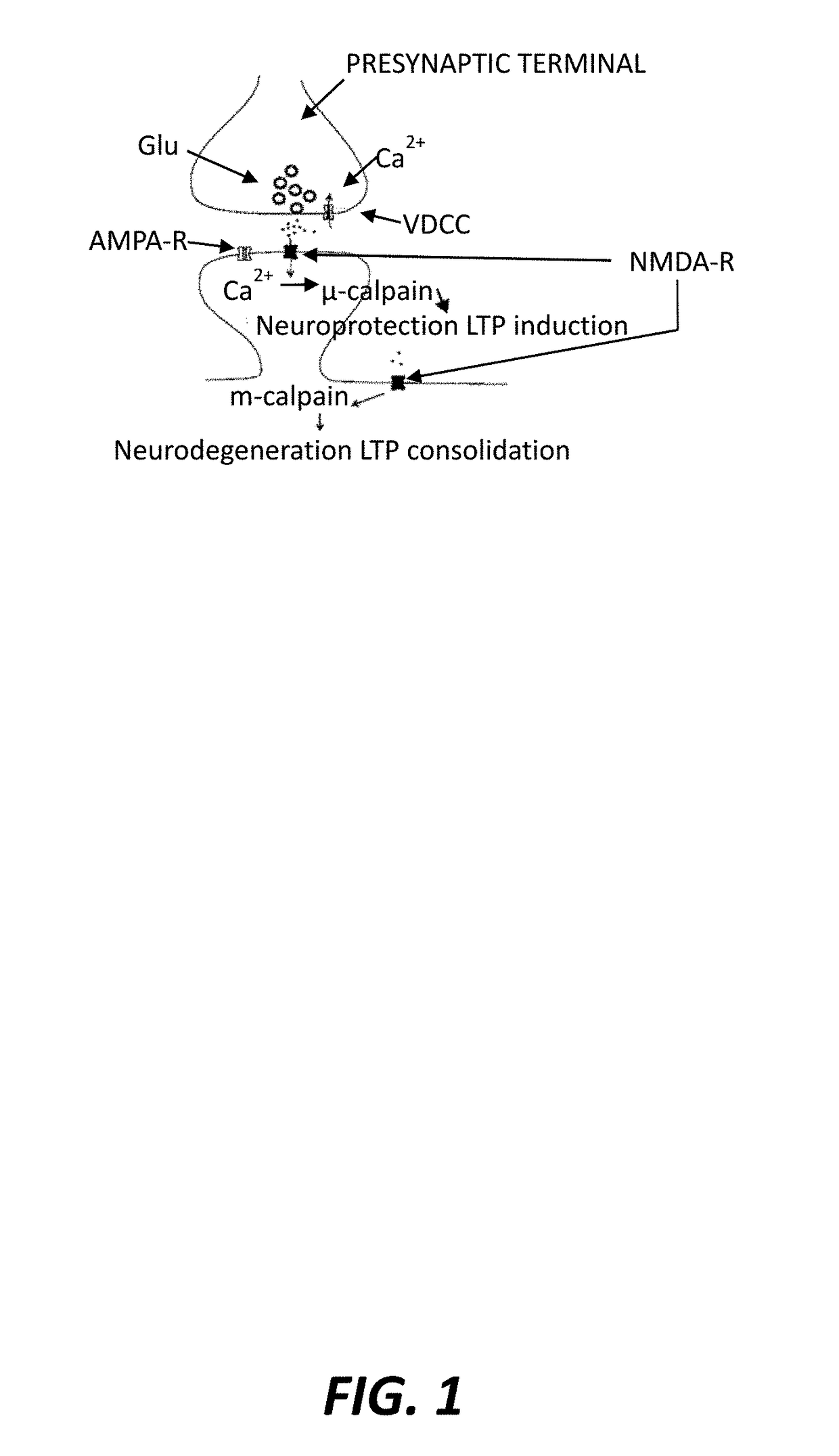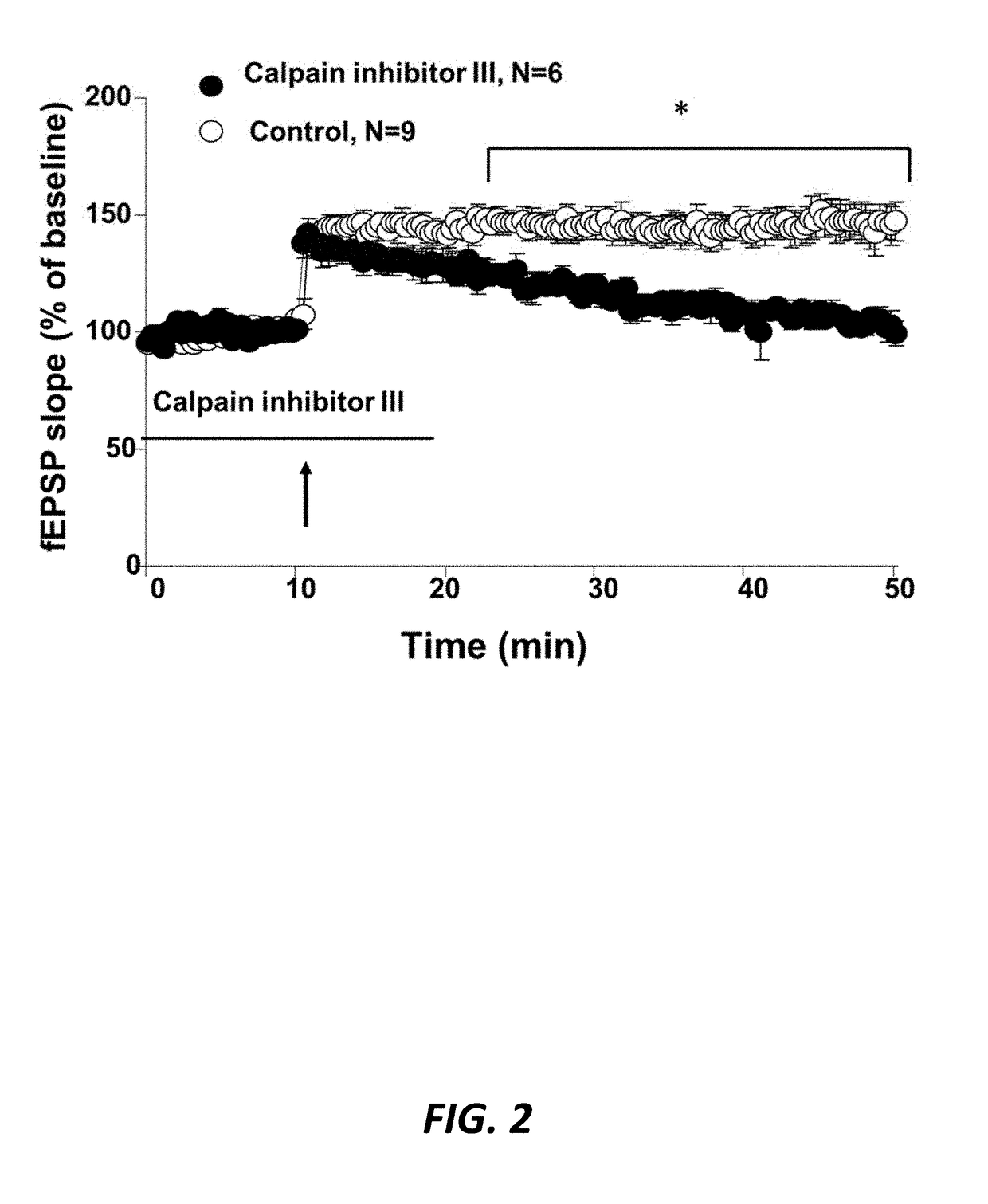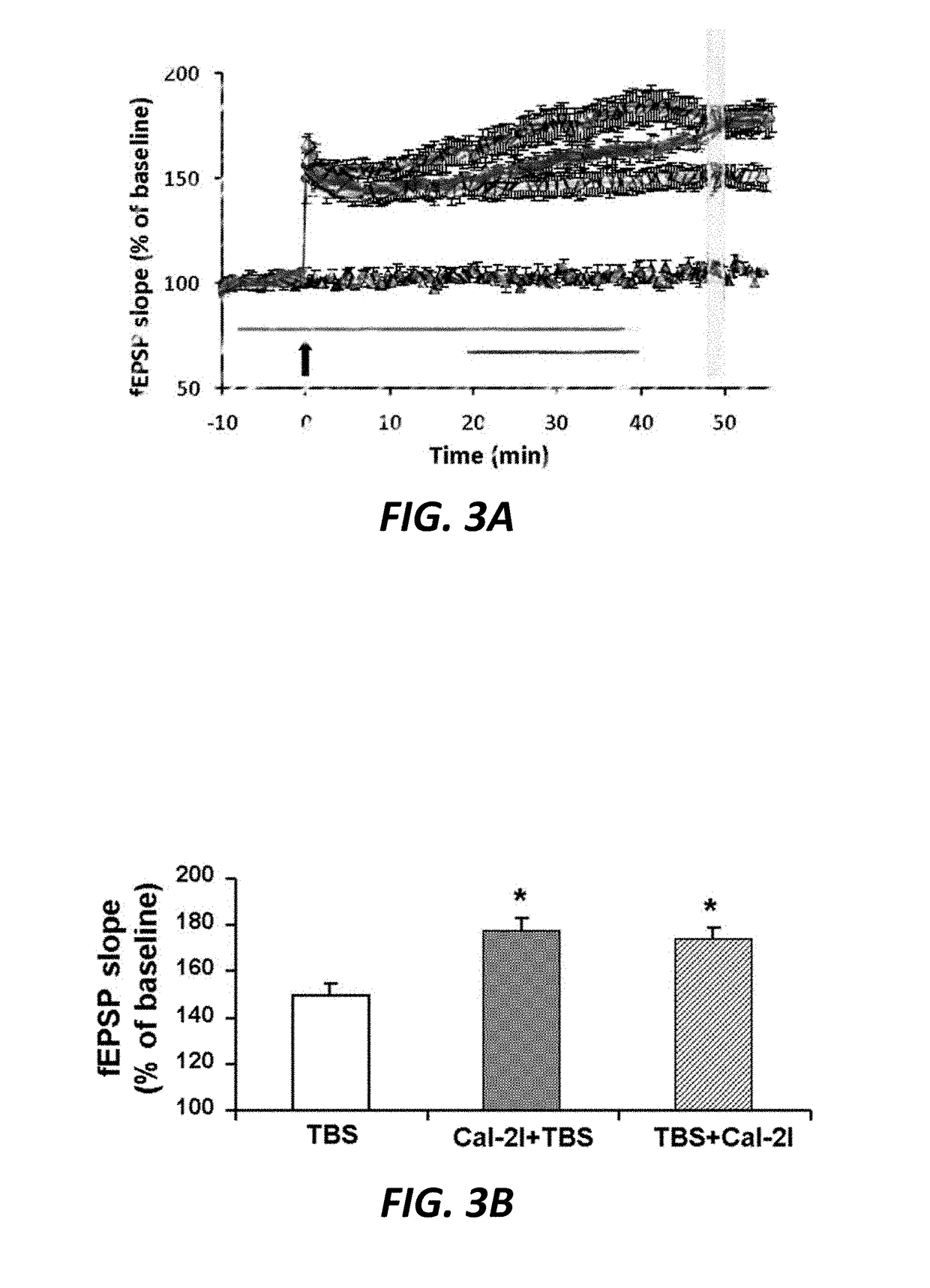Isoform-specific calpain inhibitors, methods of identification, and uses thereof
a technology of isoform-specific calpain and inhibitor, which is applied in the field of isoform-specific calpain inhibitors, methods of identification, can solve the problems that no clinical trial has progressed, and achieve the effects of increasing ltp, inhibiting cellular activity, and lowering the threshold for sustaining ltp
- Summary
- Abstract
- Description
- Claims
- Application Information
AI Technical Summary
Benefits of technology
Problems solved by technology
Method used
Image
Examples
example 1
[0133]A Small Molecule / Modified Polypeptide Highly Selective for Calpain-2
[0134]Formula 1, where chiral center 1 is the L-form and chiral center 2 is a racemic mixture of D- and L- in this example was introduced at various concentrations (from 1 nM to 10 μM) into an in vitro mix comprising succinic-Leu-Tyr-AMC and calpain-1 or calpain-2 (Sasaki et al, 1984), and the kinetics of the loss of fluorescence were determined for each of the calpains (Powers et al, 2000). Ki values obtained for the compound in the literature are 2.3 μM for calpain-1 and 0.022 μM for calpain-2 (Li et al, 1996). However, the Ki of calpain-1 was re-determined herein to be 1.29 μM±0.7 μM, and the Ki for calpain-2 was determined to be 0.025 μM±0.02 μM. Therefore, the assessment of selectivity described herein was different than the prior teaching. This compound is an inhibitor highly selective for calpain-2 because its Ki is more than 50-fold lower for calpain-2 than for calpain-1.
example 2
[0135]Generic calpain inhibitors block LTP when administered before LTP induction. Field recording of excitatory postsynaptic potentials (EPSPs; FIG. 2) was performed in stratum radiatum of field CA1 in acute rat hippocampal slices. Ten μM Calpain Inhibitor III (Z-Val-Phe-CHO; Ki for both calpain-1 and calpain-2: {tilde over ( )}8 nM), which inhibits both calpain-1 and calpain-2, was added prior to Theta-burst stimulation (TBS; 10 bursts of 4 pulses at 100 Hz with 200 ms between bursts), which can be used to elicit LTP (Capocchi et al, 1992). Preincubation with the non-selective calpain inhibitor, Calpain inhibitor III, did not block short-term potentiation, the increase in fEPSPs that follows TBS, but prevented the formation of LTP, when compared to control (compare open circles to filled circles).
example 3
[0136]A calpain 2-selective inhibitor enhances LTP. Acute hippocampal slices were prepared and bathed in ACSF. 200 nM calpain-2-selective inhibitor of Formula 1, which inhibits calpain-2 50-100 fold more than calpain-1, was administered prior to Theta-burst stimulation, which has the ability to elicit LTP (see line #1 of FIG. 3A for administration time-course). In unexpected contrast to administration of a non-selective calpain inhibitor such as calpain inhibitor III, preincubation with the calpain-2 selective inhibitor does not inhibit LTP (FIG. 3A); it enhances it. Incubation of hippocampal slices with the same highly selective calpain-2 inhibitor after Theta-burst Stimulation (TBS) also results in enhanced LTP during the consolidation phase of LTP when applied from 10 min post TBS to 1 hour post TBS.
PUM
| Property | Measurement | Unit |
|---|---|---|
| Fraction | aaaaa | aaaaa |
| Cell death | aaaaa | aaaaa |
| Inhibition | aaaaa | aaaaa |
Abstract
Description
Claims
Application Information
 Login to View More
Login to View More - R&D
- Intellectual Property
- Life Sciences
- Materials
- Tech Scout
- Unparalleled Data Quality
- Higher Quality Content
- 60% Fewer Hallucinations
Browse by: Latest US Patents, China's latest patents, Technical Efficacy Thesaurus, Application Domain, Technology Topic, Popular Technical Reports.
© 2025 PatSnap. All rights reserved.Legal|Privacy policy|Modern Slavery Act Transparency Statement|Sitemap|About US| Contact US: help@patsnap.com



